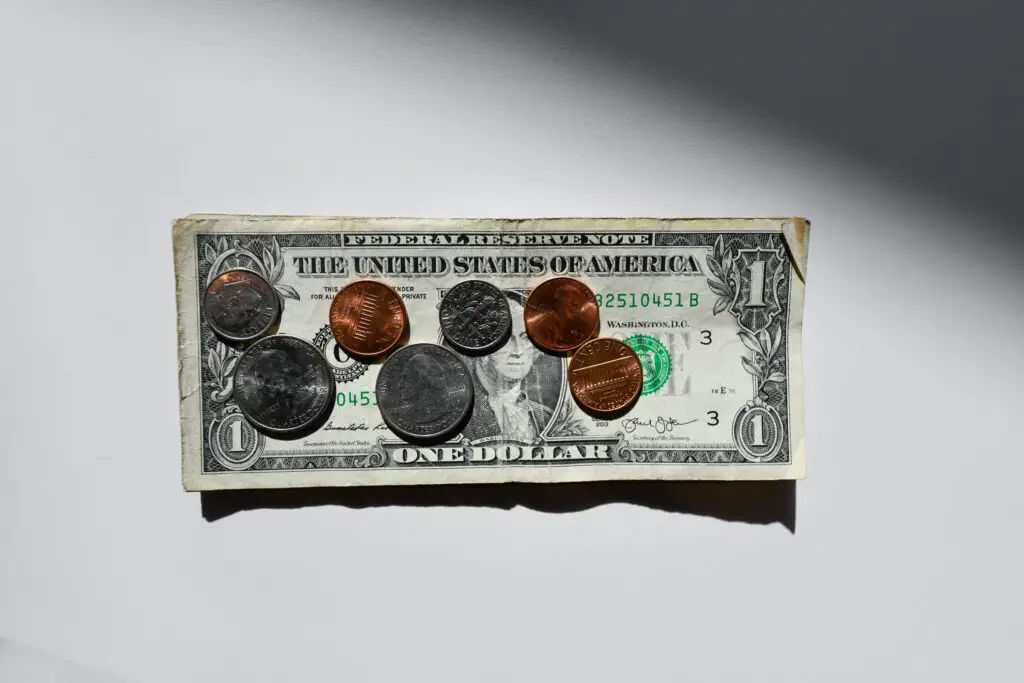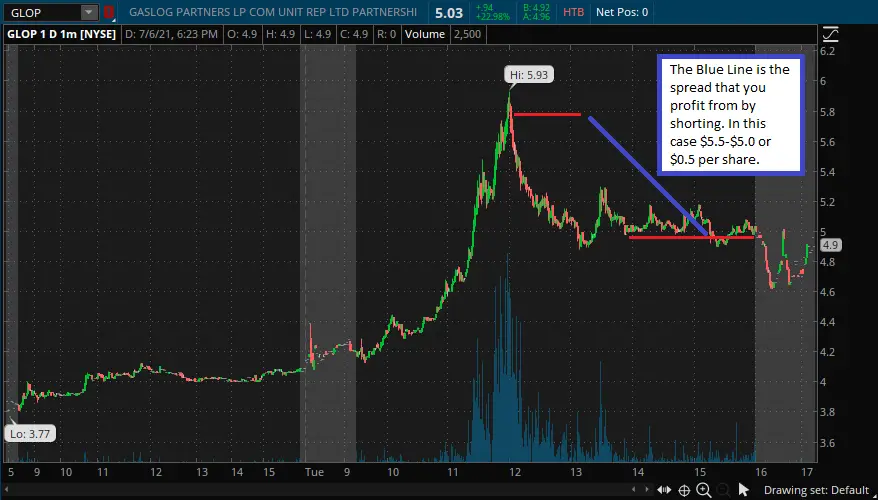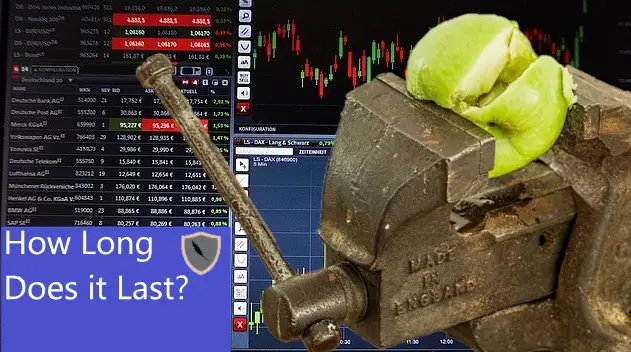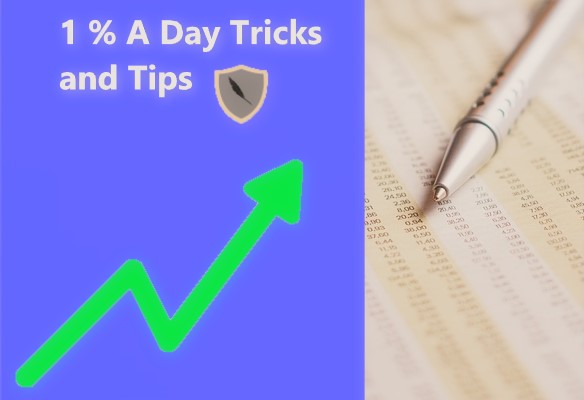Hey guys,
Today we are going to look at how to short a stock. I will go over the definition, when to short, and how you make money from it. This post is one in a series where I explain exactly how to make money in the stock market.
My previous post was how to buy or go long in the market. This one is the opposite, how to sell or “short” a stock.
Buying a stock explained with pictures
Definition of “shorting a stock” or short-selling.
When you short sell a stock you borrow the shares from either another investor or the broker and immediately sell them. At a future date you will buy back the shares and return them to the party you borrowed them from.

Think of short-selling a stock as taking out a loan in shares. You borrow the shares upfront from the other party and immediately sell them. The idea is that you will buy back the shares in the future when the price is valued less and give the shares back to the borrower.
If you did your homework properly whatever shares you ‘borrowed’ from the original holder will drop in value. When you give the shares back, or ‘buyback’ the shares to close the debt you will make a profit.
For example; If I borrowed 10 shares of AAPL from you when AAPL was worth $100 and then gave them back when they were worth $90 then I would make $100 (($100-$90)*10=$100). You as the borrower would immediately be paid for the 10 AAPL shares and would also receive a percentage return in the form of interest from me. This is because everyday that I hold onto the ‘borrowed’ shares I will pay you a premium. This is called shorting.
Typically two ‘retailers’ don’t engage in this shorting agreement. When you start shorting 99% of the time it will be against your broker. The broker will lend out the shares to you, and you will pay them a percentage in interest. This is allowed because of liquidity issues in the market along with the credibility of brokers to guarantee the transaction.
When to short sell
So no we know that short selling is. Now it’s time to put theory into practice and go over when its a good time to short sell.
Our example today is going to be a stock called Gaslog Partners Lp or by its ticker GLOP.

On the morning of July 6th, 2021 GLOP announced that it had decided to convert all of its class B shares to common shares which boosted its ownership up to 33%. While this news is bullish it does not mean that the company’s value changed, yet.
This was just good news for GLOP and nothing more. Essentially right now this is just a company blowing a lot of hot air and not showing anything for it.
That being said the company’s stock price shot up from the low $4’s to almost breaking $6. That is almost a 40% gain on nothing tangible. As such, GLOP is a prime candidate for a short position.
If you had waited to the peak of volume when the stock was over $5.50 a share to short then you would have made close to a 10% gain today at end of day. This is because you would of ‘bought-back’ the shares at $5 when you sold them at $5.5 thus making a $0.50 profit per share.
How to make money from shorting
So now you understand the basics of shorting. Going ‘short’ in a stock is a great way to bring in cash when you think everyone is overreacting to news that offers little to no value in the asset.
In essence you make money from the spread between when you entered the short position ($5.50 in our above scenario) and when you exited ($5.00 in the above scenario).

Every trading day there are multiple companies that release information that causes their stock price to shoot up.
The trick is to look at the information and critically think if it impacts their underlying business model. Sure GLOP removing the class B shares and thus increasing their own percentage ownership is important, but it does not directly offer anything that should result in a price change. Certainly not a 40% move.
By thinking critically of how stocks move in relation to news you can position yourself to make money on a downwards movement. That is the value of shorting.
Word of caution

There are two major risks to shorting a stock. You absolutely need to know understand both of them before you engage in this type of trade.
1.) Unlimited risk (in theory)
First, unlimited risk in theory. What is stopping the stock you shorted from running up 2000000000% in one month? In theory nothing. A bunch of retail traders fascinated with the stock can cause you to lose a ton. In fact shorting can cause you to lose more than your initial investment in the trade.
This is because when you buy back the shares you will buy them back at the future price. So if in the above scenario GLOP shot up to $50 a share when I bought back the 100 shares I would lose about $4,500 on the trade. If you are going to short remember this and watch your position like a hawk to make sure your ok.
2.) You will be charged interest on your shorted stock.
Second, every day that you hold the short position in your account you will be charged interest. This interest is not static and changes based off the asset and the amount of borrowers “shorters” there are currently. If nobody is shorting GLOP in the above situation then I wouldn’t have had to pay much interest. If I short a stock that everyone else is then I would have to pay a premium to borrow the shares in the first place.
You need a margin account to short
Unless you have a massive amount of capital and a deal with an independent market maker you need to have a margin account.
A margin account is similar to a perpetual loan given to you by a broker. This allows you to instantly buy/sell stocks without having to wait for the cash to settle in your account.
Further it allows you to engage in advanced trading strategies such as shorting. This is because in order to short you need to have a ‘loan account’ or margin account set up by a brokerage firm.
The Margin Call
FINRA regulations specify that you need to have at least 25% of the current markets value of the securities in your account. If you shorted 10 shares of a company and each share was valued at $100 then would need a minimum of $250 in your account to cover the short.
If your position went against you and the shares rose in value to $200 then you would need $500 or else you would be margin called.
As you can see things can quickly get out of hand if you take out a large short position on a company and the value quickly rises. If your account gets margin called then your position will be forcibly closed by the broker and the difference in price would be billed to you.
Conclusion
Shorting is a powerful tool to have in your arsenal. If you see an asset that you think is overvalued then you can employ the short-selling trade strategy to make money off a downtrend in the market. It does come with risk but if selectively, and intelligently, engaged with the short-sell is an amazing tool to make you decent returns.
As always if you like content like this then you should share on social media, like, follow, and subscribe to our newsletter!
-
How Long Does a Short Squeeze Last? (3 Answers)

What is the time frame for you short squeeze? Well here is everything you will ever need to know to determine how long it will last.
-
Why You Still Own a Stock After It’s Delisted and How to Sell It

Do you still own a stock after its delisted? How do you sell it? Don’t worry the stock is still worth money and here is how to sell.
-
Can You Make 1% A Day in the Stock Market? (3 Steps)

Making 1% a day in the stock market is hard but defiantly doable. Here are 3 simple steps to helping you achieve this return.
Until next time, best of luck in your trading!
Sincerely,




Comments are closed.